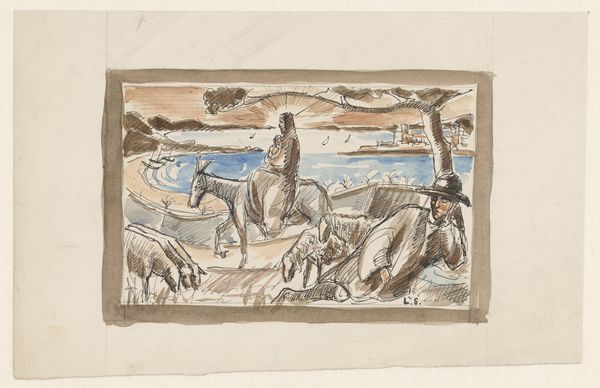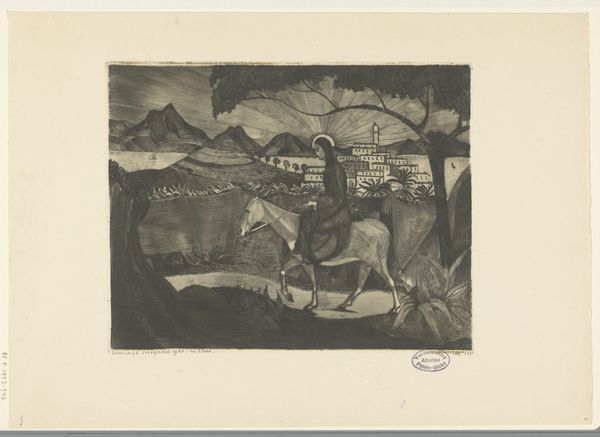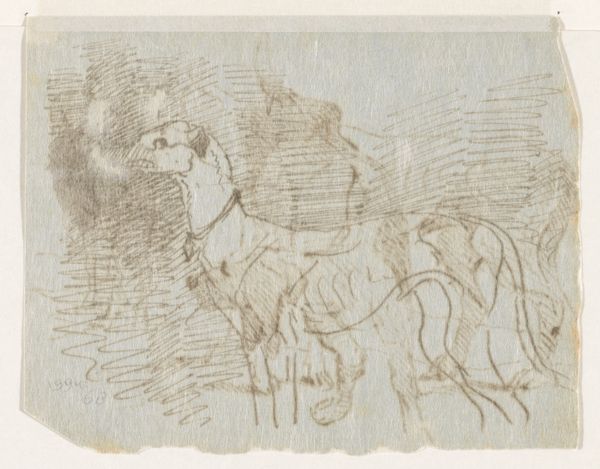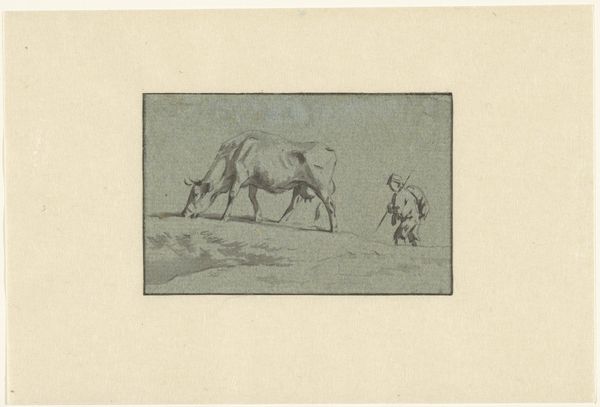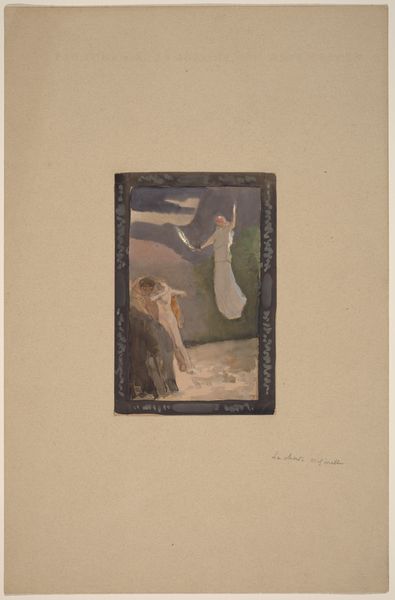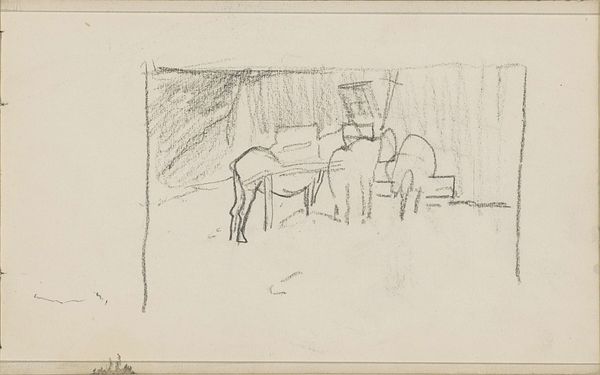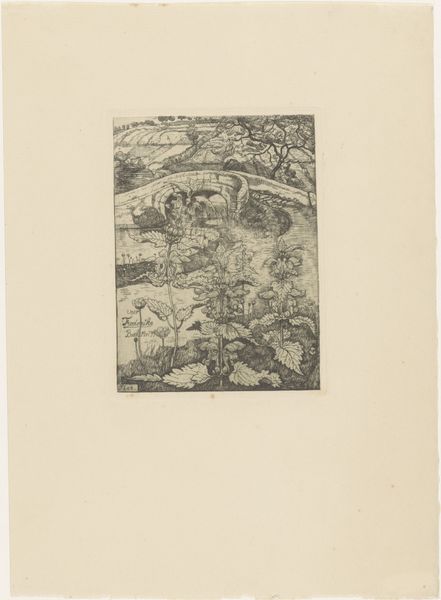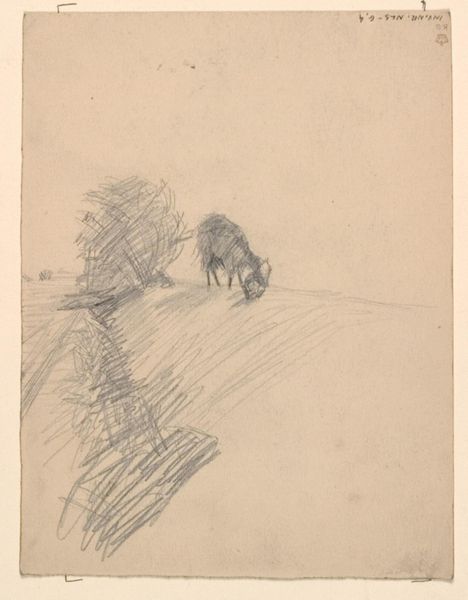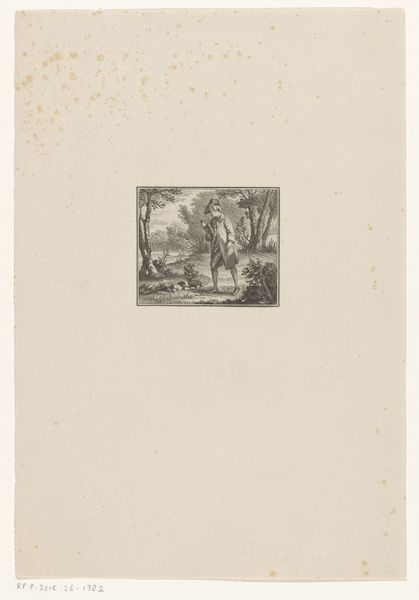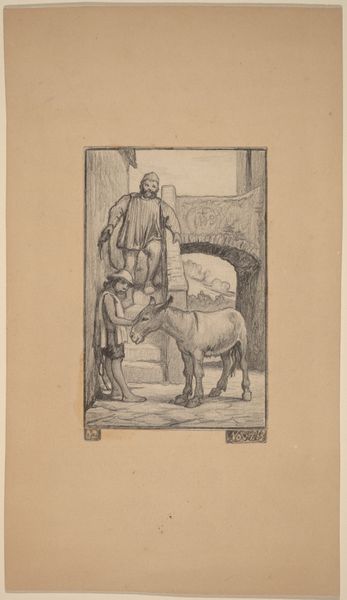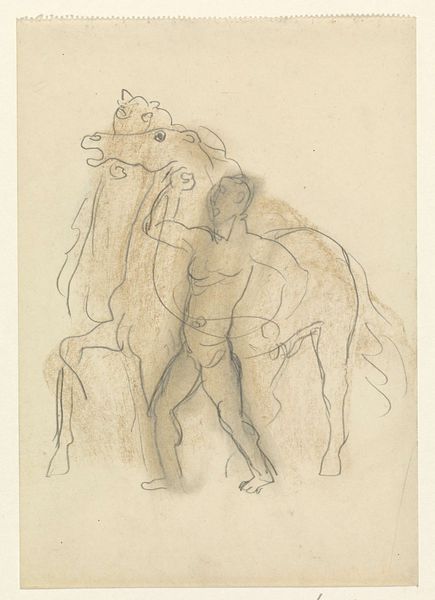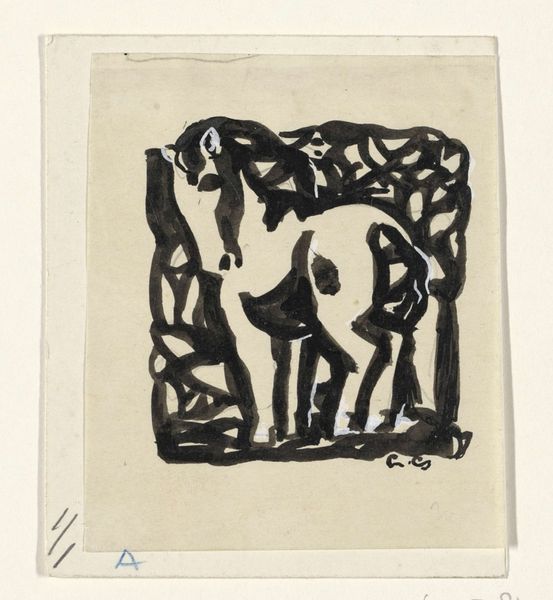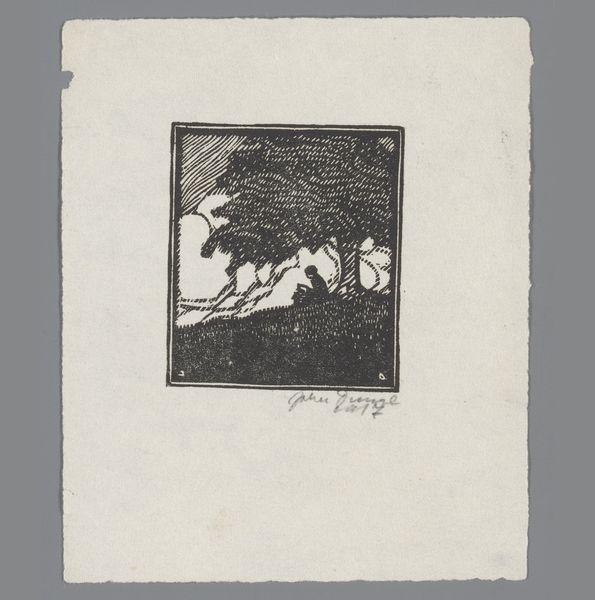
plein-air, watercolor
#
art-nouveau
#
plein-air
#
landscape
#
figuration
#
watercolor
#
symbolism
#
watercolor
Dimensions: height 40 mm, width 51 mm
Copyright: Rijks Museum: Open Domain
Editor: Here we have Jan Toorop's "Deer by a Tree in front of a Pond", created around 1895 using watercolor. The landscape feels almost dreamlike, especially with the gentle colors. I am curious, what do you see in this piece? Curator: This watercolor offers us a fascinating glimpse into the confluence of Art Nouveau and Symbolism at the turn of the century, specifically considering the materiality of the work. The "en plein air" aspect hints at a direct interaction with nature, yet the scene is rendered in a highly stylized manner, subverting traditional landscape painting. Look at the deliberate brushstrokes. How might those brushstrokes influence the interpretation of labor and skill? Editor: I see how the strokes add to the mood. But what do you mean by "labor?" Curator: Consider watercolor itself. Its accessibility meant it was often employed by amateur artists and women. Yet, Toorop elevates it, almost challenging established hierarchies of art media and the cultural associations linked to them. Do you see how the flatness and pattern-like application could also critique industrial modes of production? Editor: I do now. So, Toorop uses a traditionally “lower” art form, watercolor, to address broader social issues like class and industrialization through depictions of nature. Curator: Precisely. It makes you wonder, doesn't it, if the stylized nature and idyllic setting comment on a societal longing for an escape from the increasingly industrialized world. Editor: That's fascinating! I didn’t think about it in terms of materials impacting the meaning like that. I'll never look at a watercolor the same way again.
Comments
No comments
Be the first to comment and join the conversation on the ultimate creative platform.
